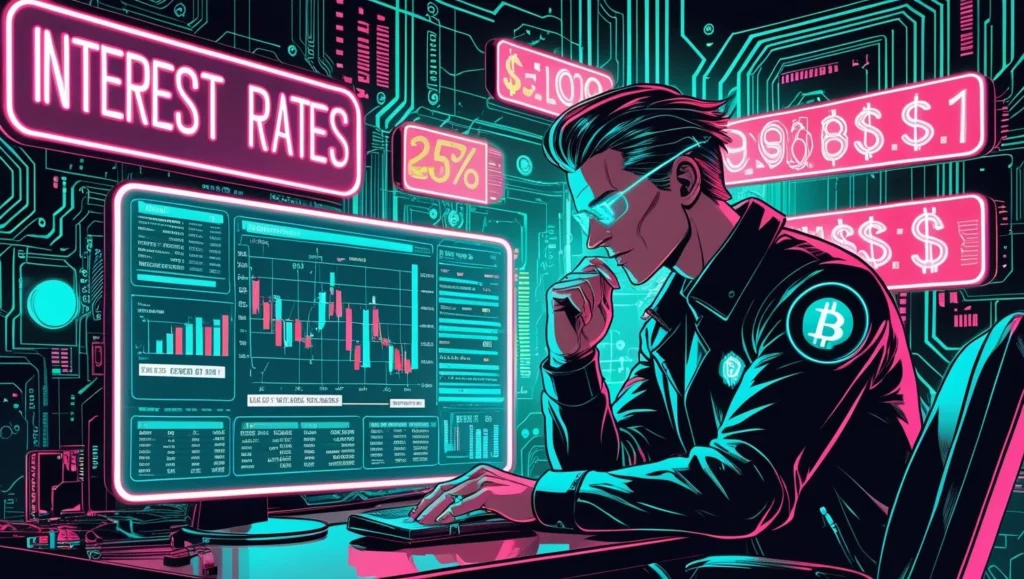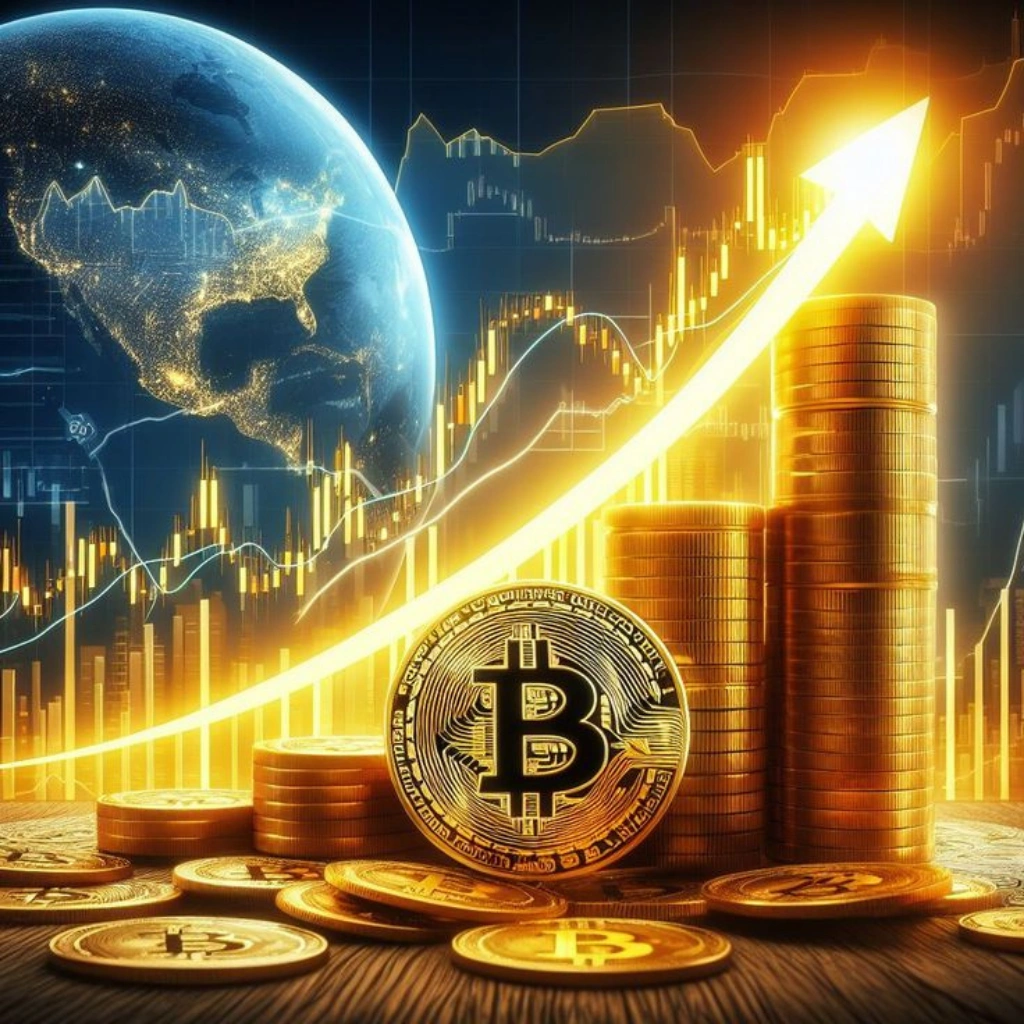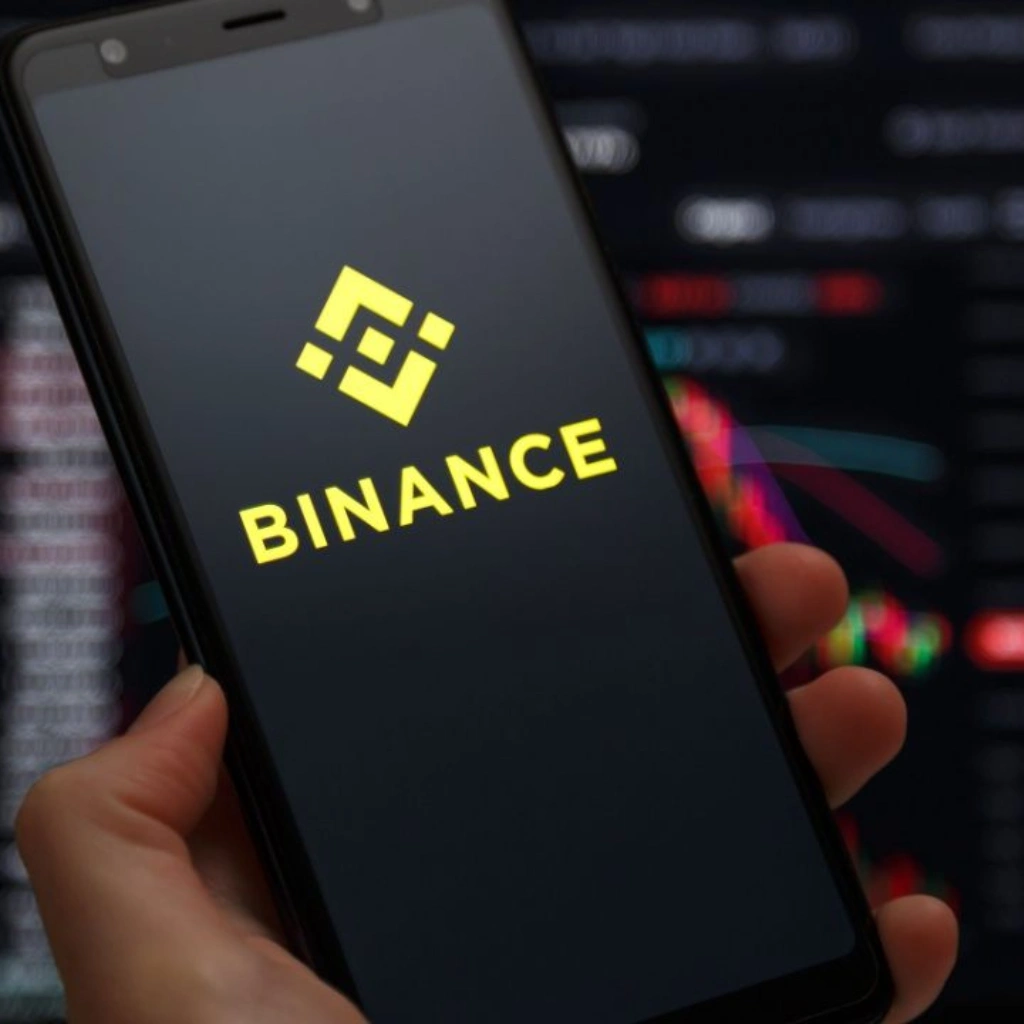If you’ve spent time around crypto circles lately, you’ve probably come across the phrase interest rate and crypto more than once. But what does that even mean—why should digital currencies care about what the Federal Reserve does?
It’s a fair question. And the truth is, while interest rates and crypto might seem like two very different animals, they’re more intertwined than you’d think.
Let’s walk through it step by step.
How Interest Rate and Crypto Start to Overlap
At its core, an interest rate is the cost of borrowing money. When the U.S. central bank (aka the Fed) raises interest rates, borrowing becomes more expensive—for businesses, banks, and even you and me.
Now, here’s the thing: crypto markets thrive on risk and liquidity. Many investors enter the space chasing high returns, often using borrowed funds to magnify their positions. But when interest rates go up? That risk appetite tends to shrink.
Why? Because safer investments—like Treasury bonds—suddenly look more appealing. Why roll the dice on volatile tokens when you can earn a predictable yield elsewhere?
So, as rates climb, some investors pull out of riskier assets like Bitcoin and Ethereum. The result? Crypto prices often dip or slow down in momentum.


The Investor Behavior Behind the Volatility
Let’s break it down with an example.
Imagine you’re a fund manager, and U.S. interest rates just jumped. You’re managing exposure across all kinds of assets—stocks, bonds, and yes, crypto. Suddenly, you can get 4–5% yield from government bonds, no risk. Do you really want to keep so much in volatile altcoins?
That’s the shift happening behind the scenes.
Many large investors start to “de-risk,” which usually means trimming crypto exposure. Retail traders tend to follow suit—or panic. That’s why we often see crypto dips during Fed announcements.
Also, higher rates can make it more expensive for crypto startups to raise money. Less capital, less innovation… and in some cases, more shutdowns.

But It’s Not All Bad News for Crypto
Now, here’s where it gets interesting. While rising rates might hurt in the short term, some effects can actually help crypto evolve.
Take stablecoins, for example. When dollar yields are high, people holding stablecoins through yield-bearing platforms can earn meaningful returns. That makes stablecoins more attractive as a digital version of savings.
Plus, as “free money” fades (aka the era of zero interest rates), weaker crypto projects tend to disappear. It’s not fun—but it does clean up the ecosystem. What’s left? Potentially more sustainable, serious players.
And don’t forget the Bitcoin angle. Some argue that rising interest rates—and the inflation they often try to tame—make the case for Bitcoin stronger. After all, Bitcoin was created partly in response to distrust in centralized finance.


A Longer-Term Look: Is the Connection Here to Stay?
The relationship between interest rate and crypto has become clearer since traditional institutions joined the crypto space. When Wall Street trades both bonds and Bitcoin, macro factors like interest rates start to matter a lot more.
But nothing in markets stays the same forever.
Crypto is still young. As adoption spreads and new technologies emerge, its sensitivity to interest rate changes might shift too. Maybe in the future, crypto will decouple from macro trends. But right now? They’re definitely linked.
Whether it’s price volatility, funding for startups, or investor confidence—interest rate decisions ripple through the crypto space more than most people realize.

Final Thoughts: Why Interest Rate and Crypto Still Matter
If you’re navigating the crypto world, especially as an investor or builder, ignoring macro trends is no longer an option. Interest rate and crypto aren’t just buzzwords—they’re part of the same economic puzzle now.
So next time the Fed announces a change? Tune in. You don’t need to be an economist to see how those numbers affect your portfolio, your strategy, or even the next project you’re eyeing.
Relevant news: The Real Impact of Interest Rate and Crypto: Pros & Cons You Should Know




